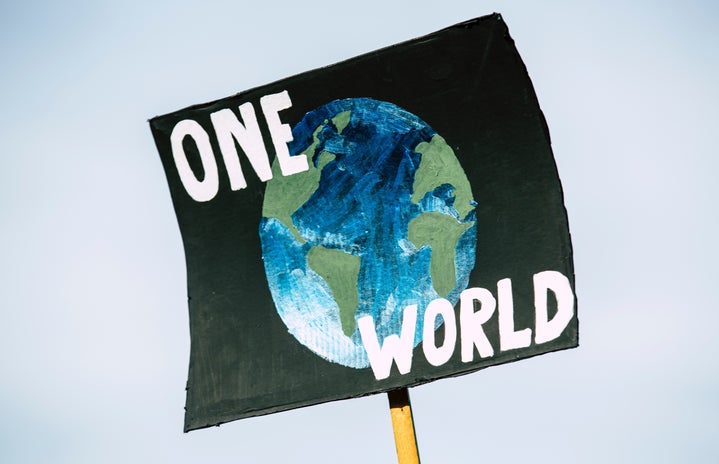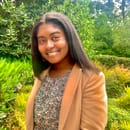It has been 17 years since the release of the first Cheetah Girls movie, which introduced a group of four fierce and diverse women to the world. The Cheetah Girls were the first multi-ethnic group to come out of Disney Channel. Based on the novel series created by Deborah Gregory, Disney created three movie installments, each set in different cities as the girls grew up and matured together. These movies showed young girls watching from home how women achieve their dreams through hard work and perseverance. Seeing the diverse backgrounds of each Cheetah and how their differences make their group stronger sends a positive message, which may have been lost in the time it was released. Looking at the current events and the social reform occurring now in 2020, the message of the Cheetah Girls rings clearly now more than ever.
- Diverse Backgrounds
-
Between all four girls, coming from New York and Texas, the Cheetah Girls represent diverse backgrounds. Galleria is of African-American and Italian descent, Aqua is African-American, Chanel has her Hispanic heritage, and Dorinda is Caucasian (although Sabrina Bryan is actually of Hispanic descent as well). Many young girls found someone who looked like them on the screen and, therefore, someone to look up to. Aside from the ethnic backgrounds, the girls all had different body shapes and sizes, which is representative of how women actually look. Not everyone is the same, and showing these differences helps show young girls watching that, as they go through body changes, they do not have to aspire to have unrealistic body types. This idea is shown through one of the popular Cheetah Girls’ songs, which says “We are sisters, we stand together. We make up one big family though we don’t look the same. Our spots are different; different colors. We make each other stronger, that ain’t never gonna change.” They celebrated each other’s differences and never treated each other differently though they had different backgrounds. Showing this to kids now will show that even in a world with so much hate towards people that are different, you can be friends and have great relationships with people from different backgrounds. The outside does not matter nearly as much as what’s on the inside.
- Income Differences
-
With economic disparity and unequal pay as important debates in society now, this movie went against the trend of society. In the film, the minorities had higher income levels compared to Dorinda. Without parents to support her, Dorinda had to earn her own money. While Dorinda was working, other girls, such as Chanel and Galleria, are seen shopping. These income gaps are due to many factors, including households with two incomes vs one income. Throughout the series, we see Dorinda’s determination and perseverance as she works to support herself while doing what she loves. In the second movie, Dorinda explains how she views dance and her life. When talking with Joaquin, a Spanish count she met in Barcelona, she said, “You can trace your ancestors back for centuries. When I go home, I’m going home to a foster family. You dance because it is a hobby. I dance because it’s my life. I may not know where I came from, but I know where I’m going.”
- Family Structures
-
Each Cheetah had a different family structure, which was unlike the typical nuclear family of a mom and dad in the same house. Galleria, played by Raven-Symoné, was the only character who lived with both of her parents, who were married and active in her life. Aqua, played by Kiely Williams, only mentions her father in the movies. In the books, she moved to New York from Houston with her twin sister Angie (who is omitted from the movie adaptation) and her father. Chanel, played by Adrienne Bailon, lives with her mother, who is focused on her boyfriend in the first movie more than Chanel. In the second movie, Chanel’s mother takes her to Spain as she tries to get her boyfriend to propose. This would give her that father figure, but Chanel is apprehensive about the situation. In the first movie, it is revealed that Dorinda, played by Sabrina Bryan, doesn’t know her biological parents and lives in a foster home with 10 other children. All of the Cheetahs have different struggles and family interactions, but together they make up a family and are truly like sisters. Today, as the nuclear family is much less common, this representation of different structures shows that there is not a “typical” family that one must have and that family isn’t always made up of people who are related by blood.
- Interracial Relationships
-
One interesting element of the franchise is the way they portray each girls’ romantic relationships. Throughout the films, every Cheetah ended up dating someone who was a different ethnicity or came from a different background. In society and in pop culture, interracial relationships were once taboo, if not illegal. In 2020, it is more common. However, some people still do not support the idea. Some only support the relationship if the female is white. Galleria dated a Caucasian male named Derek in the first movie and then had a crush on Angel, a Spanish guitar player she met in the streets of Barcelona. Chanel found her love interest in the third movie, while the Cheetahs were in India. She began dating the movie director of a Bollywood Movie the Cheetah Girls were set to star in. Dorinda started dating Joaquin, the Spanish dancing Count she met in the second movie. However, the pair could not keep up with the long-distance relationship, and in the third movie, we found out that the two had split. Finally, Aqua started crushing on a tech support worker who had been helping her fix her computer. The tech support worker, Amar (who also goes by Kevin), lives in Mumbai and runs into Aqua in person when they go to film their Bollywood movie. Showing each character experience a unique relationship that crossed color lines showed that love is not defined by the race or national origin of the two. This is a concept still not completely accepted 17 years later.
- Cultural Appreciation
-
The beauty of having a diverse cast and different shooting locations is the different cultures and perspectives each person brings. From shooting movies in New York, Barcelona, and Mumbai, the cultures of each city became crucial aspects of the storyline and played a large role in the development of the characters. In Barcelona, the girls were learning Spanish, exploring landmarks such as La Sagrada Familia, listening to the beautiful music, and interacting with locals who shared their culture with the girls. In India, the girls got to learn about the importance of elephants in Hindi culture, make wishes on a wishing tree, learn about Bollywood, try Bollywood dancing, and experience Holi, the Festival of Color. Both movies showed young kids the beauty of other cultures and countries even if they had never been outside of their home town. In a world with extreme patriotism and animosity towards foreigners, a movie like this would spread the message of “One World” rather than various countries. In the words of the Cheetah Girls: “All of us, we share, One World, One Love, One and All, We’re a Circle together. One World, One Heart, One Song, Now and Forever.”
2020 has unearthed a lot of darkness and hatred. However, in these times, we also see unity and strength more than ever as people come together to support each other and stand up for human rights. When looking back at these older movies that shaped a lot of our childhoods, we see it with fresh eyes and understand it a little differently. Hopefully, Disney makes more movies or series that celebrates our differences like Cheetah Girls did many years ago!



